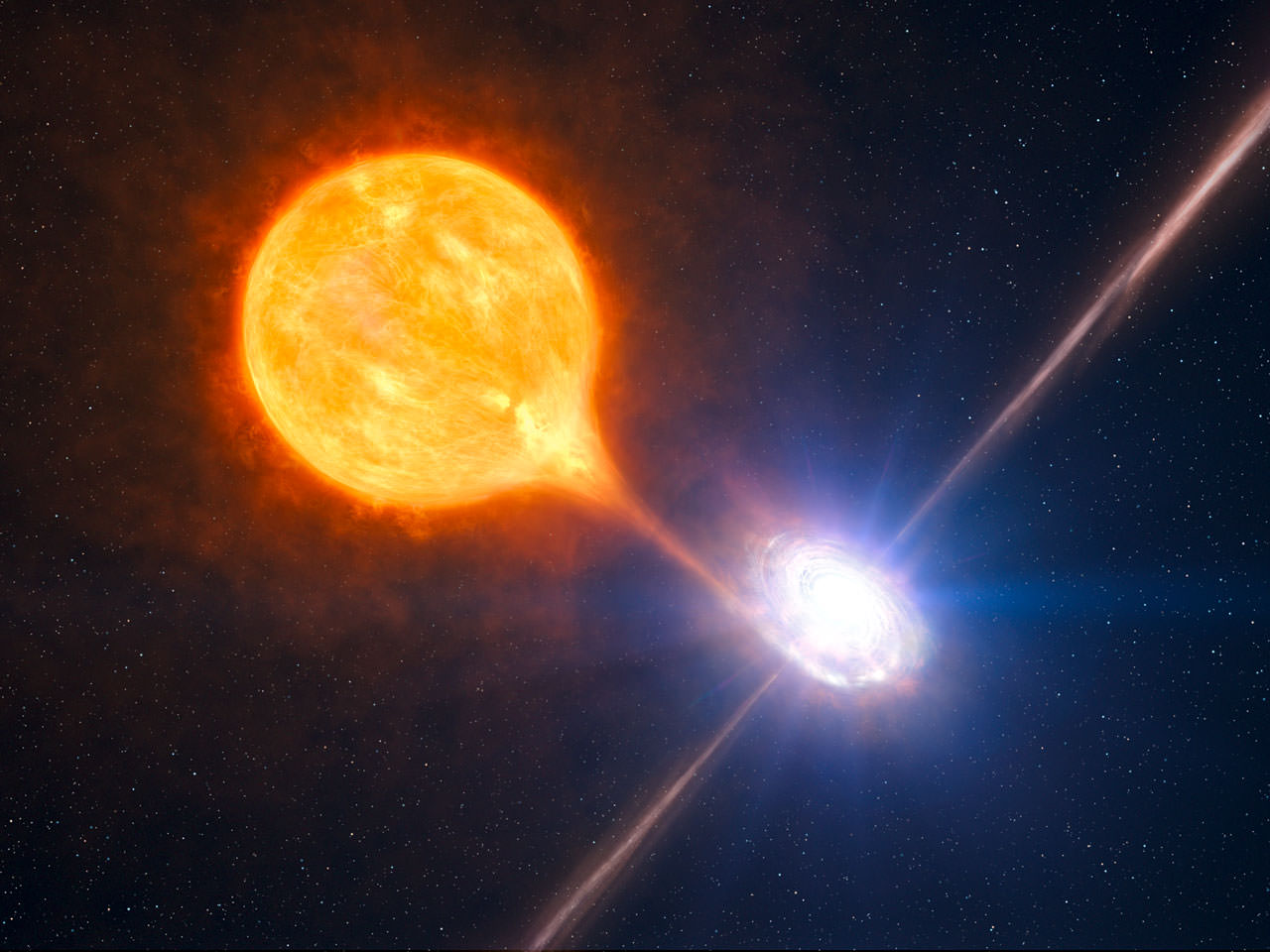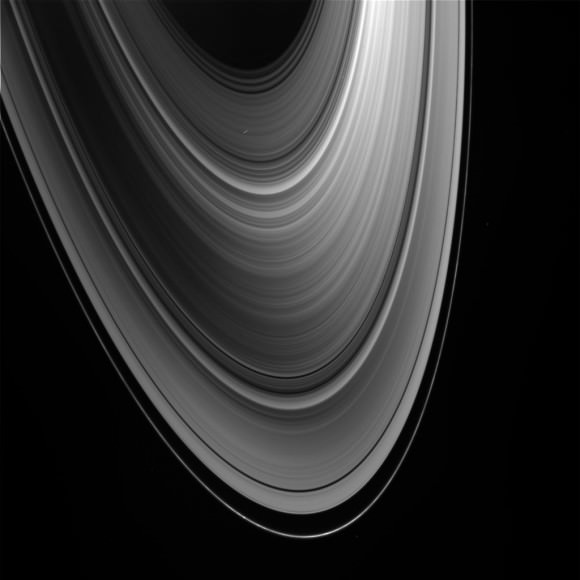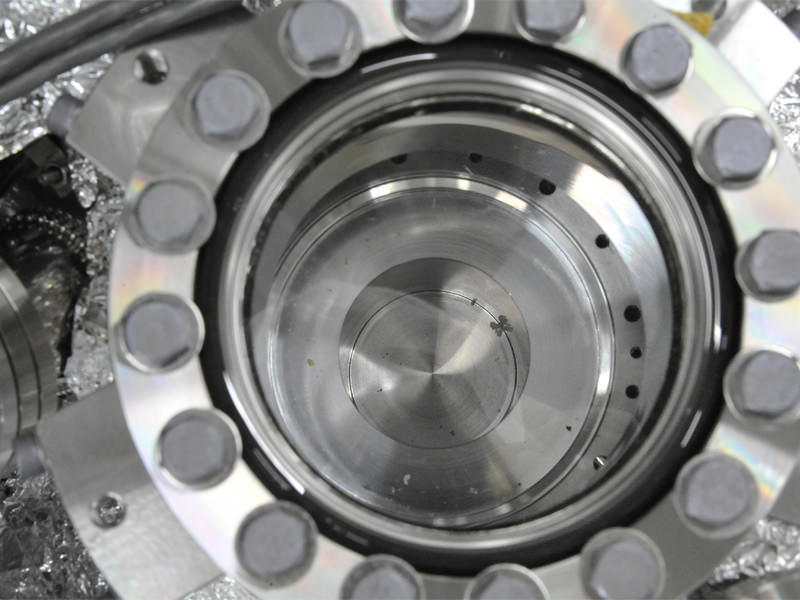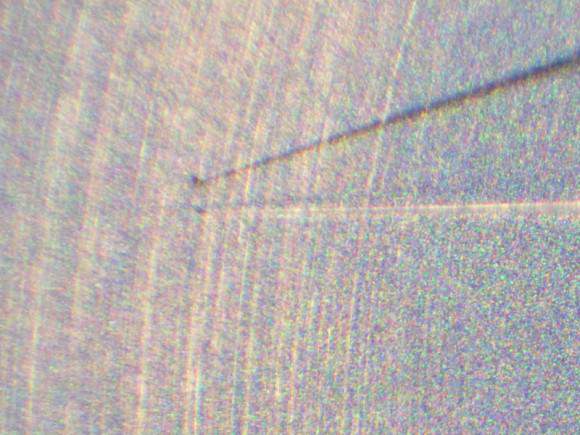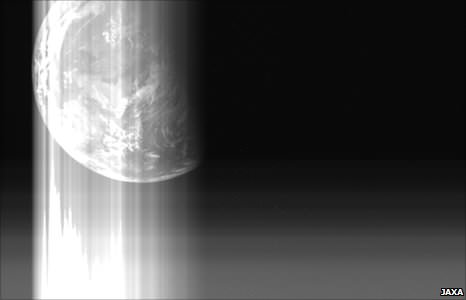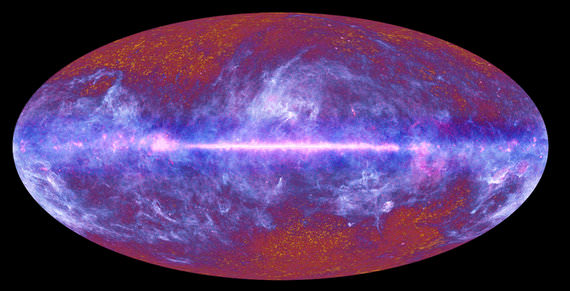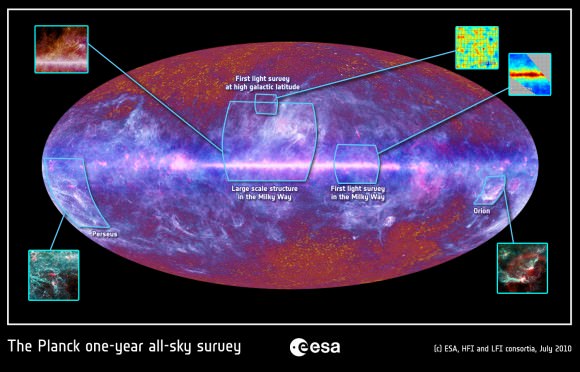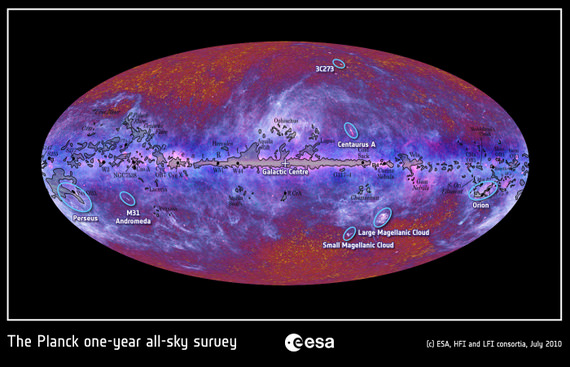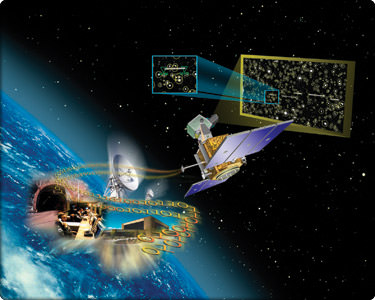[/caption]
A relatively small black hole is producing tremendously powerful jets while creating a huge bubble of hot gas. Both the jets and the bubble are the largest ever seen, meaning this mini black hole is a powerhouse. But the most unusual feature of this remarkable black hole is not its energy output, but how it is emitting energy.
“The energy output is impressive, but is comparable with the X-ray luminosity of so-called Ultraluminous X-ray sources,” said Manfred Pakull, the lead author of a new paper published today in Nature. “The notion that powerhouses exist that generate most of their energy in the form of jets (kinetic energy) and not as radiation (photons) is rather new.”
Black holes are known to release an incredible amount of energy when they swallow matter, and as Pakull told Universe Today, it was previously thought that most of the energy came out in the form of radiation, predominantly X-rays. But this new gas-blowing black hole, called S26, is showing that some black holes can release at least as much energy, and perhaps much more, in the form of collimated jets of fast moving particles.
“This black hole is just a few solar masses, but is a real miniature version of the most powerful quasars and radio galaxies,” said Pakull, “which contain black holes with masses of a few million times that of the Sun.”
This object is a microquasar, which are formed by two objects — either a white dwarf, neutron star or a black hole, along with a companion star. The X-rays are produced by matter falling from one component to the other, and can produce jets of high-speed particles. The fast jets slam into the surrounding interstellar gas, heating it and triggering an expanding bubble made of hot gas and ultra-fast particles colliding at different temperatures.
Of the dozen or so microquasars that have been found in the Milky Way Galaxy, most of the bubbles are fairly small, – less than 10 light-years across. But this one is 1,000 light-years wide. Plus this microquasar is tens of times more powerful than ones previously seen.
Using ESO’s Very Large Telescope and NASA’s Chandra X-ray telescope Pakull and his team were able to observe the areas where the jets smash into the interstellar gas around the black hole, and saw that the bubble of hot gas is inflating at a speed of almost one million kilometers per hour.
The jets are equally impressive, about 300 parsecs long, and although powerful jets have been seen from supermassive black holes, they were thought to be less frequent in the smaller microquasar variety. This new discovery may have astronomers looking more closely at other microquasars.
“The length of the jets in NGC 7793 is amazing, compared to the size of the black hole from which they are launched,” said co-author Robert Soria. “If the black hole were shrunk to the size of a soccer ball, each jet would extend from the Earth to beyond the orbit of Pluto.”
S26 is located 12 million light-years away, in the outskirts of the spiral galaxy NGC 7793. From the size and expansion velocity of the bubble the astronomers have found that the jet activity must have been ongoing for at least 200,000 years.
With all this incredible speed, size and activity, what do Pakull and his team project as the future of this microquasar?
“Yes, the expansion velocity (275 km/s) is quite impressive, but it will diminish with time,” Pakull told Universe Today. “If it was much lower at, say, 70 km/s the shocked gas would not emit so much optical light (for example the Balmer series of Hydrogen) and we would not have detected the bubble. The future of S26 depends on the evolution of the central microquasar which emits the jets. I expect that it could be active for another 100,000 to few million years.”
Pakull said it is interesting to imagine what would happen if the microqusar suddenly stopped emitting the jets. “Then the bubble would not suddenly disappear, but shine on like before for another few 100,000 years,” he said. “It would resemble a supernova remnant, albeit with a 100 times higher energy content.”
Pakull added that this new finding will help astronomers understand the similarity between small black holes formed from exploded stars and the supermassive black holes at the centers of galaxies, and he hopes this work will stimulate more theoretical work in how black holes produce energy.
Read the team’s paper (pdf file)
Sources: ESO, email exchange with Manfred Pakull.

